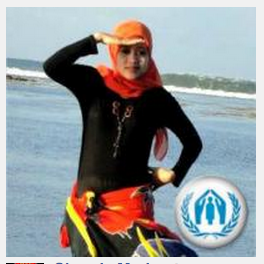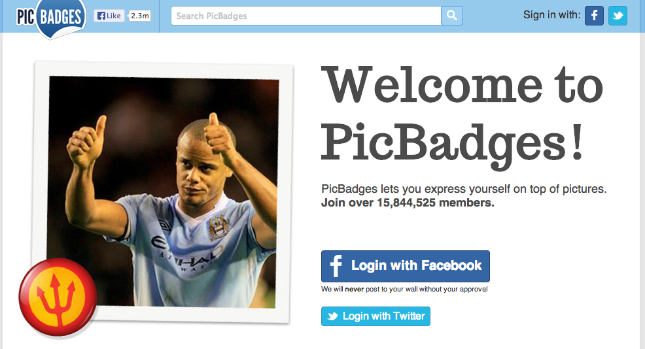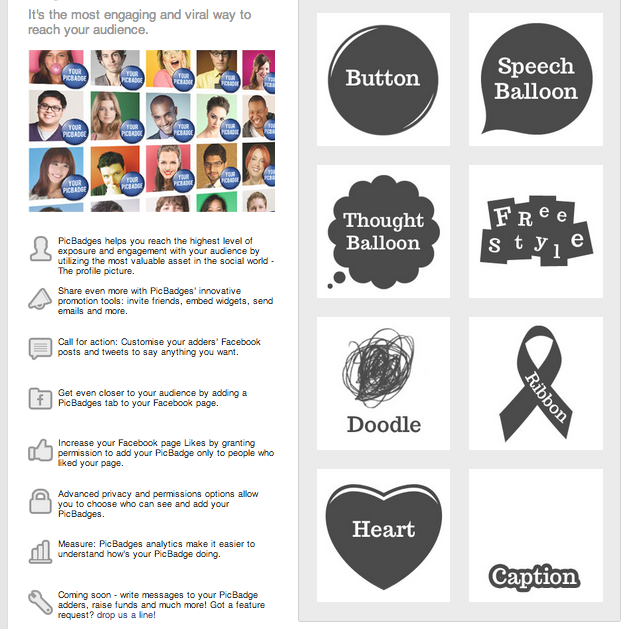

Before I explain how to use PicBadges for peer-to-peer fundraising campaigns (and what PicBadges is, exactly), would you indulge me a moment to share a bit of my childhood with you?
There were a half-dozen girls in my first-grade class who were Girl Scouts; I was not one of them – but I wanted to be.
As young as I was, I must’ve been drawn to belonging to a special group and standing out for that reason. At least that’s how I’ll perceive my admiration of the brown uniforms that included a broad sash dotted with merit badges.
Now that I’m older, I think that if I had daughters, I’d have them join the Girl Scouts solely to guarantee access to those delicious cookies… mmmm, Thin Mints….
I also wonder if my penchant for social geotagging is actually a manifestation of my latent desire to be a Girl Scout. How else could I explain my mini-obsession with earning Foursquare badges (Fresh Brew, Level 5)?
Well, there’s another app that would not only quench my thirst to collect virtual badges but also serve as a fun, neat marketing tool for your nonprofit peer-to-peer fundraising campaign.
In their own words, PicBadges is a social platform, allowing people and businesses to create and share ideas, activities, events, and interests on top of profile pictures.

With PicBadges you can create small graphics that would be overlaid over your Facebook or Twitter profile picture. Other PicBadge users could then add these badges to their Facebook and/or Twitter profile pictures. You can use these profile pictures on your peer-to-peer fundraising page.
3 Ways To Use PicBadges in Peer-to-Peer Fundraising:
1. PicBadges piques interest
“What is that?” a friend might ask herself, as your changed profile picture shows up on her Facebook news feed. She notices a button in the corner of the picture; on this button is the hashtag for the fundraiser or the nonprofit’s logo.
Your friend proceeds to ask you what the deal is, you share the link to your fundraising website, and voila, she donates to your peer-to-peer fundraising campaign.
2. PicBadges shows solidarity
We bond over things like Bieber fever, school spirit, and sports teams. Surely we would just as readily bond over causes like finding a cure for diseases, improving education in developing nations, and fighting modern slavery.
A PicBadge would be a simple way of uniting your donors, fans, and volunteers throughout the course of the peer-to-peer fundraising campaign.
3. PicBadges generates momentum
As the PicBadge brings people together, it can be an element that attracts attention and generates buzz that increases participation in your fundraising campaign.
So, How Do I Actually Use PicBadges?
1. Sign up!
2. Choose a template.
There are eight to choose from: Button, Speech Balloon, Thought Balloon, Free Style, Doodle, Ribbon, Heart, and Caption.
3. Create your button!
The Caption, Speech, and Thought Balloon templates have fewer features than the others. The remaining five templates allow you to set an image in the background.
4. Compose a call-to-action post to accompany the badge (remember to include the link to the fundraising page).
If you’re creating a PicBadge for Twitter, remember to keep the call to action, with the URL, to 120 characters. Use an URL shorter like bit.ly to help you conserve characters.
The call to action should get people to click on the link, where they can learn more about the campaign. For your fundraisers, if they’re running a marathon, the call-to-action might look like, “I’m running a marathon, find out why: [URL]”
5. Invite fans to add your PicBadge to their profile photo.
And voila, badges to help you promote your fundraiser. Just like the kind you’d get from scouting, minus the sewing.





